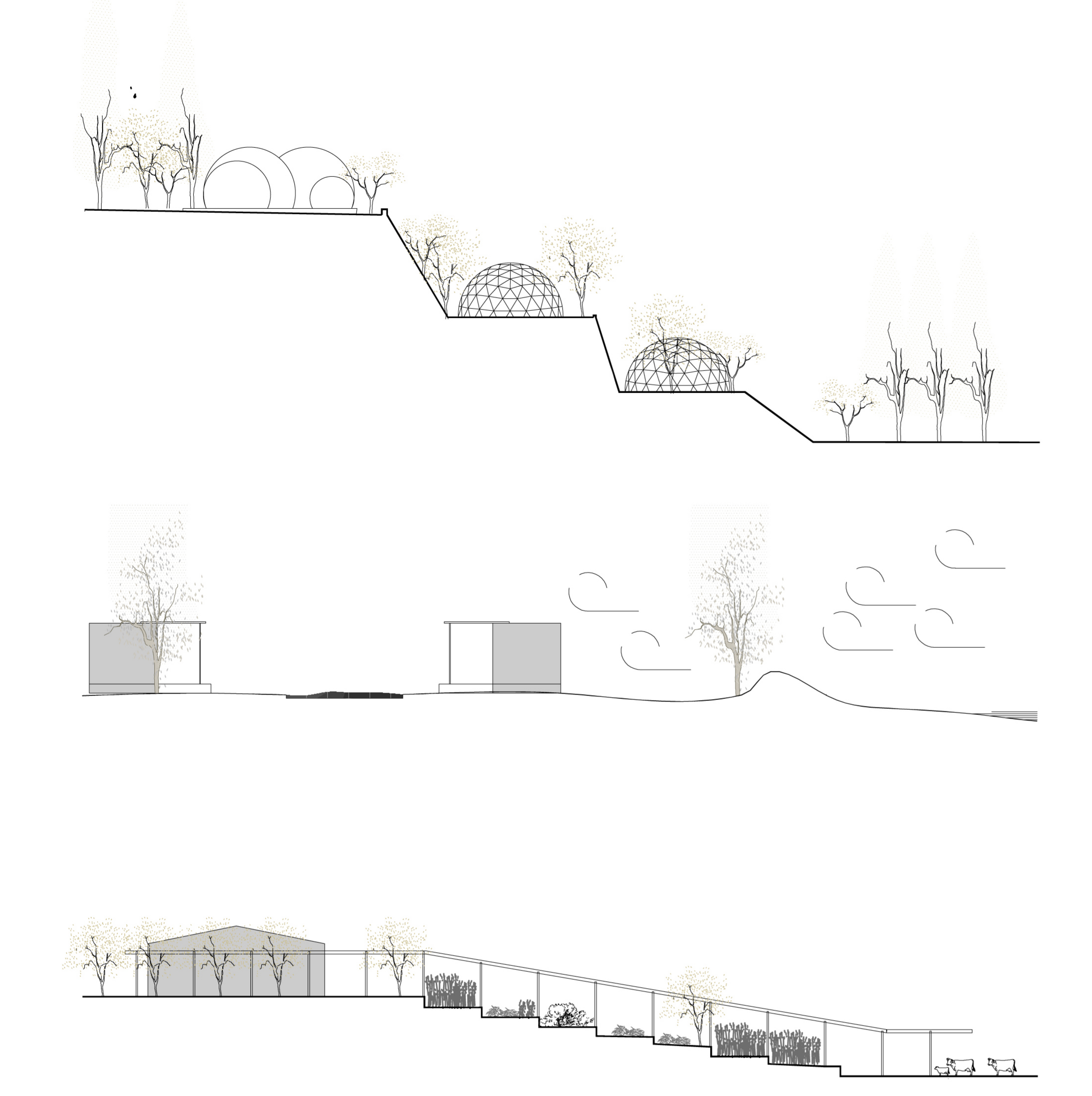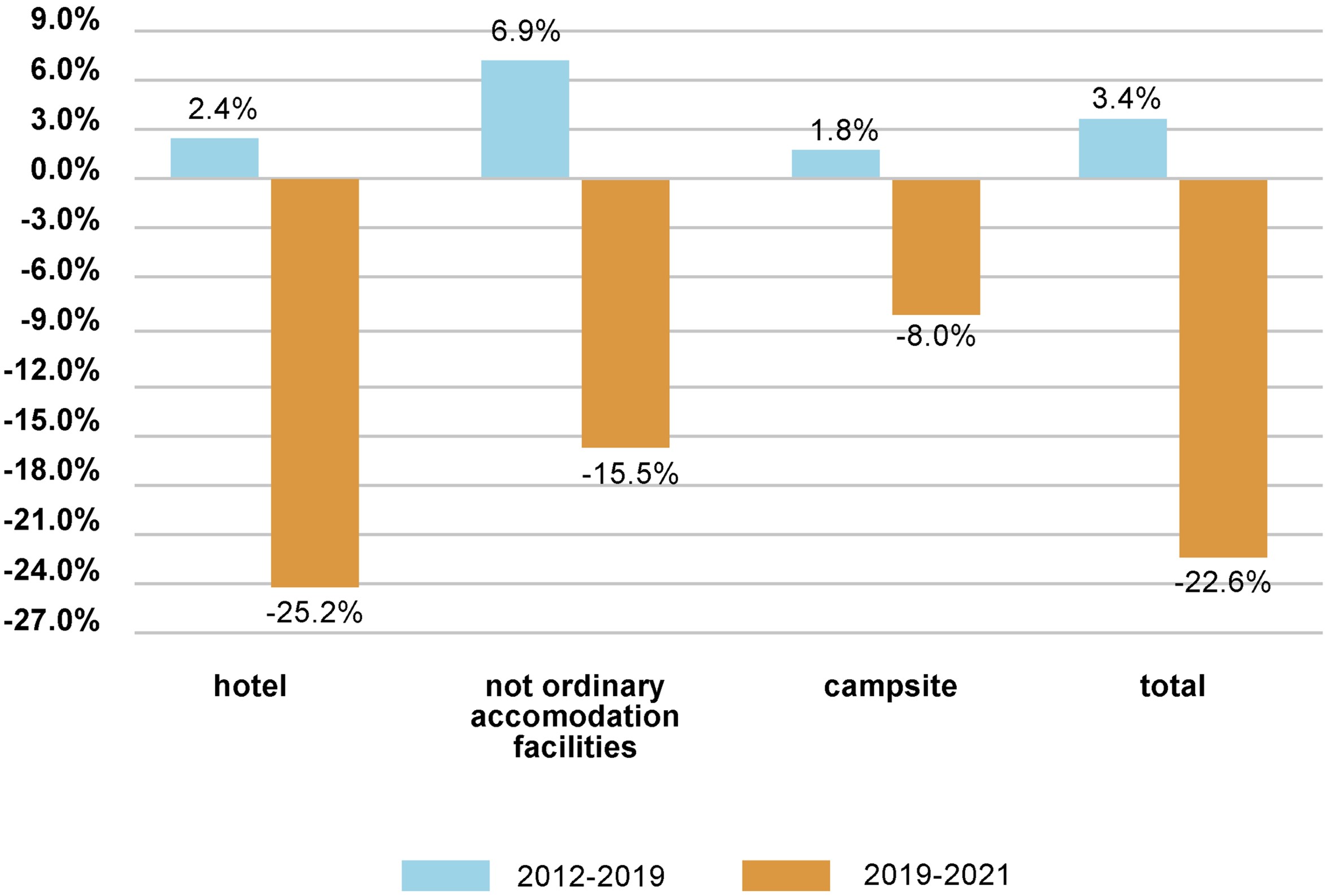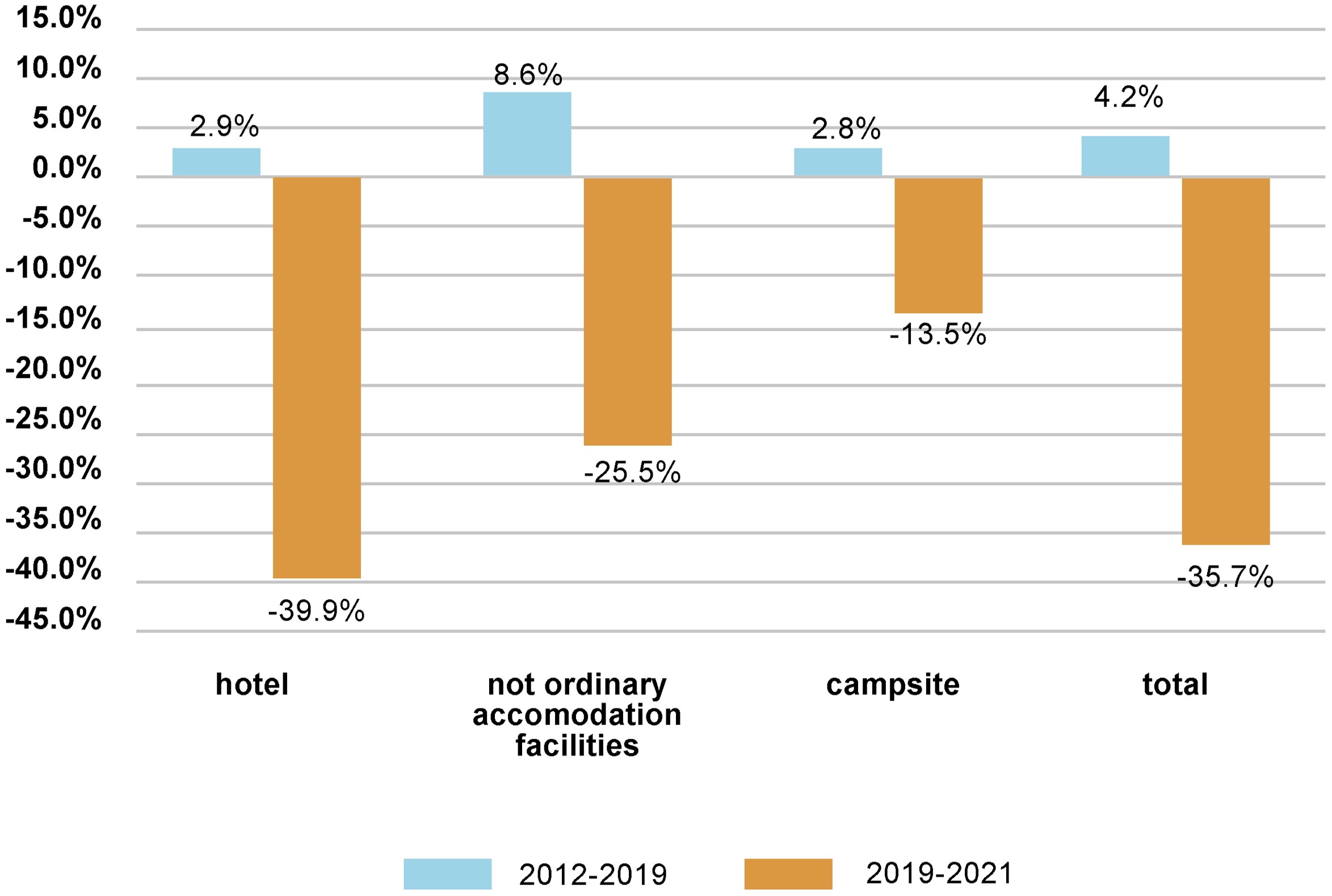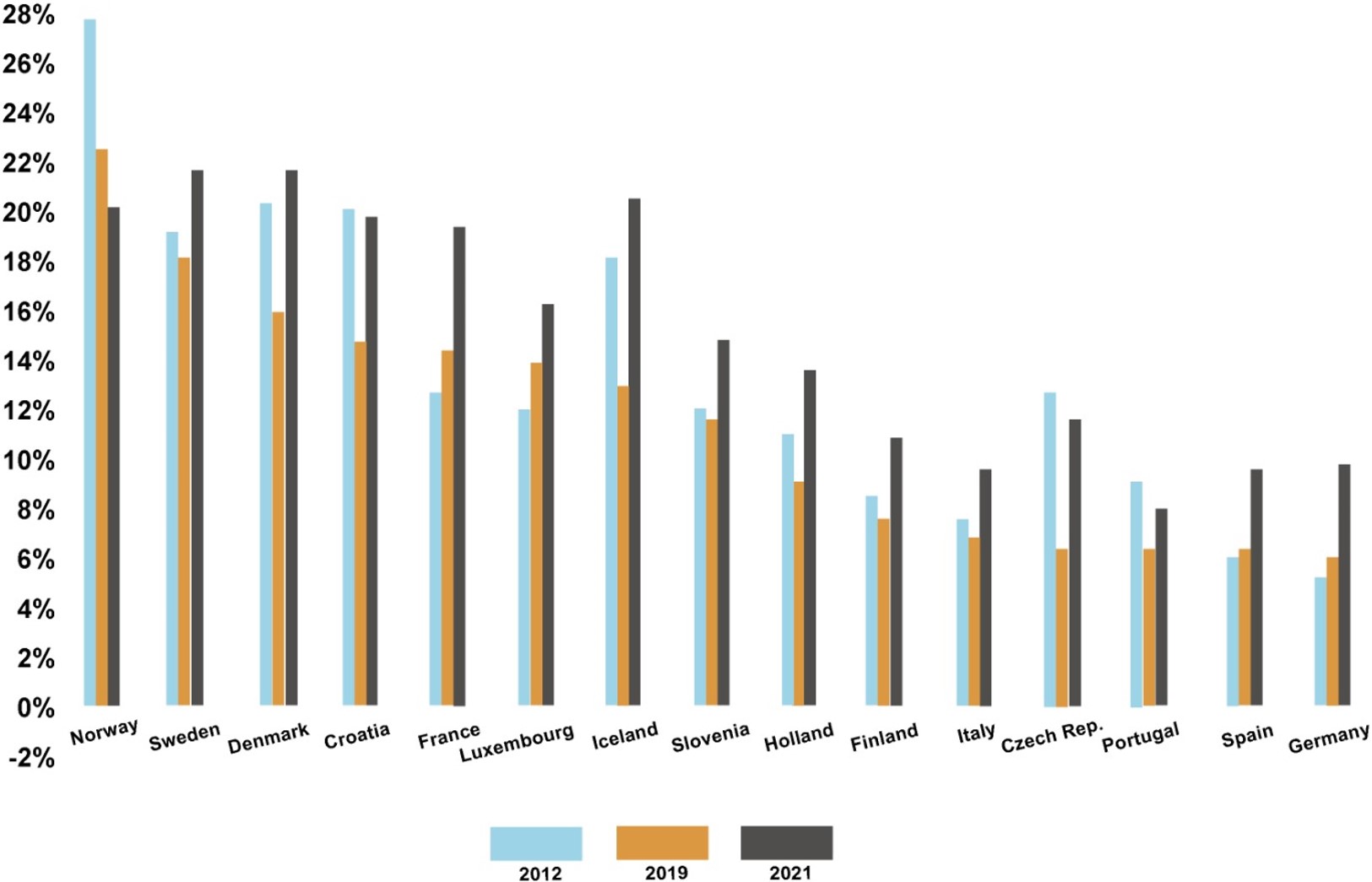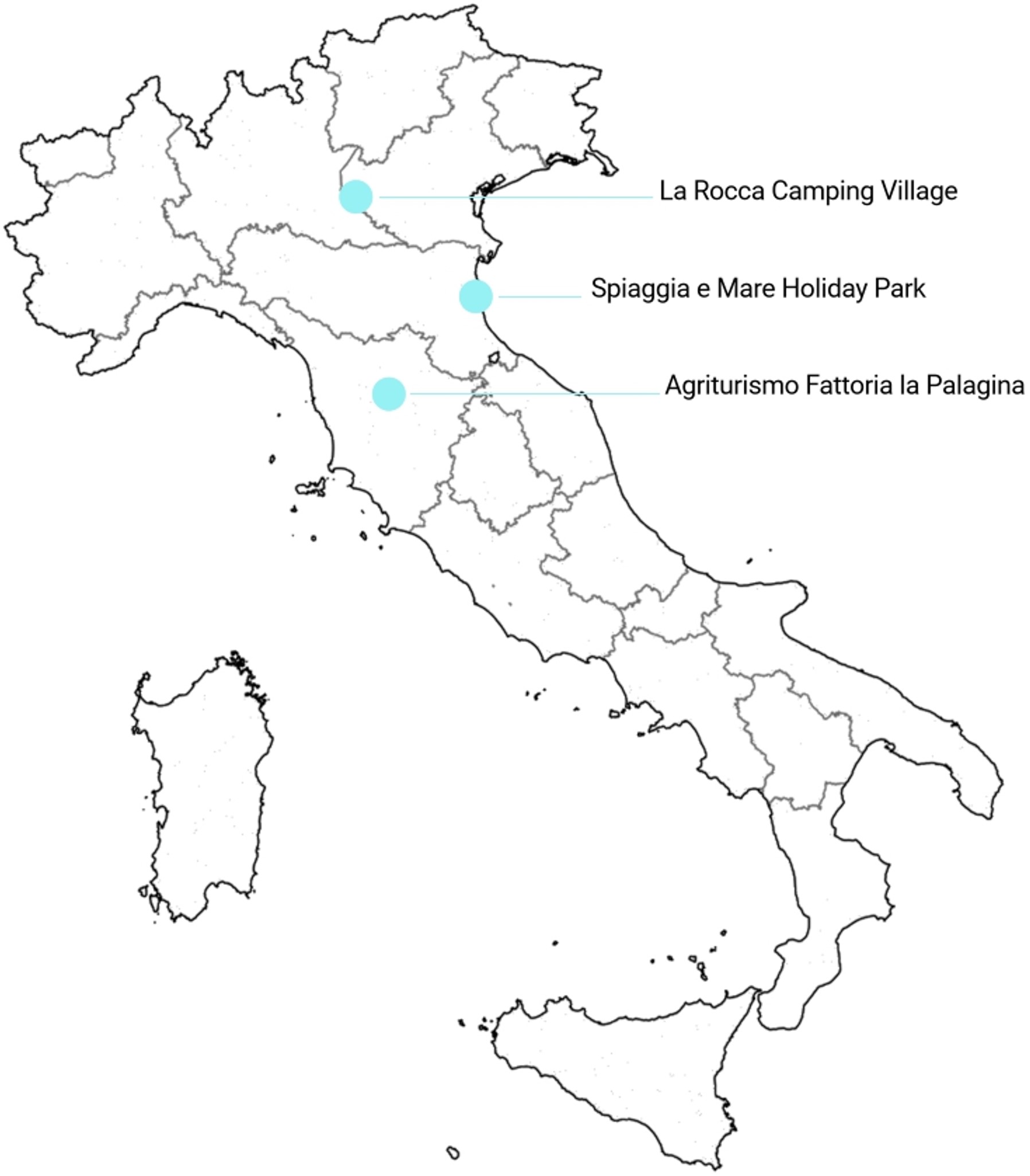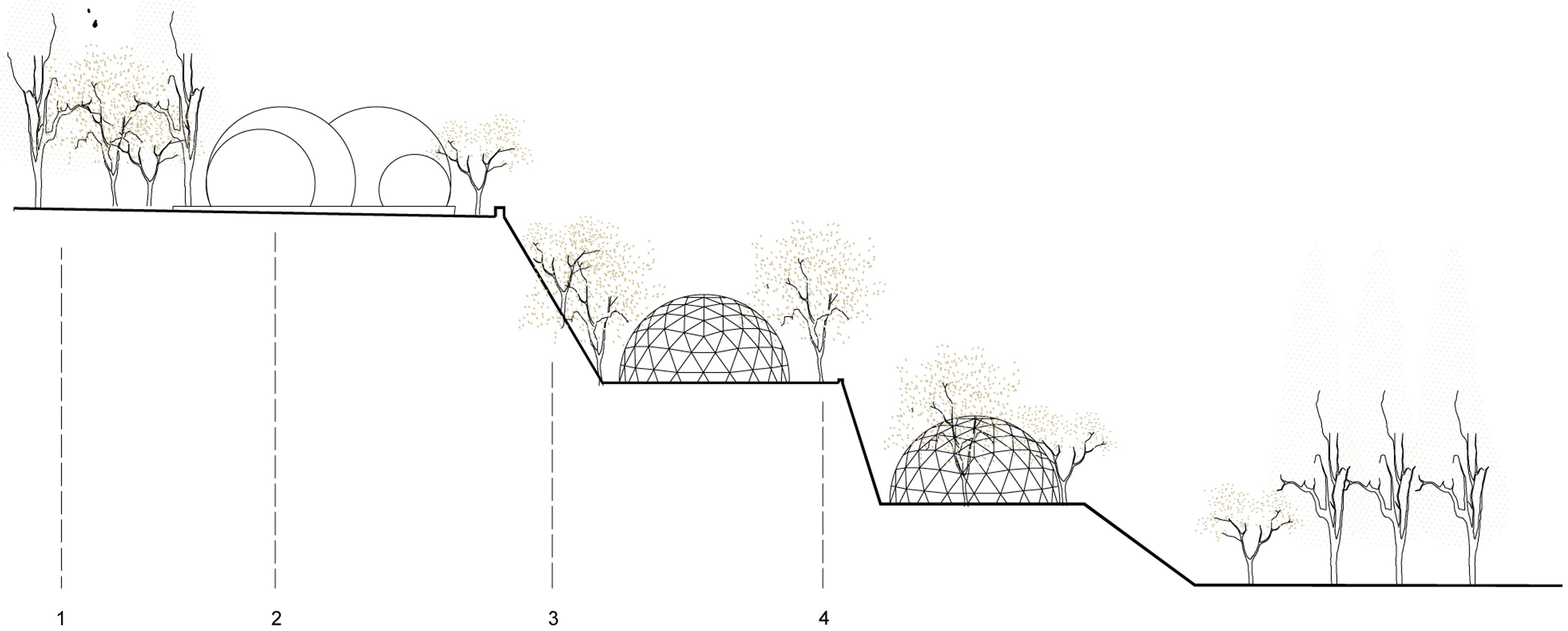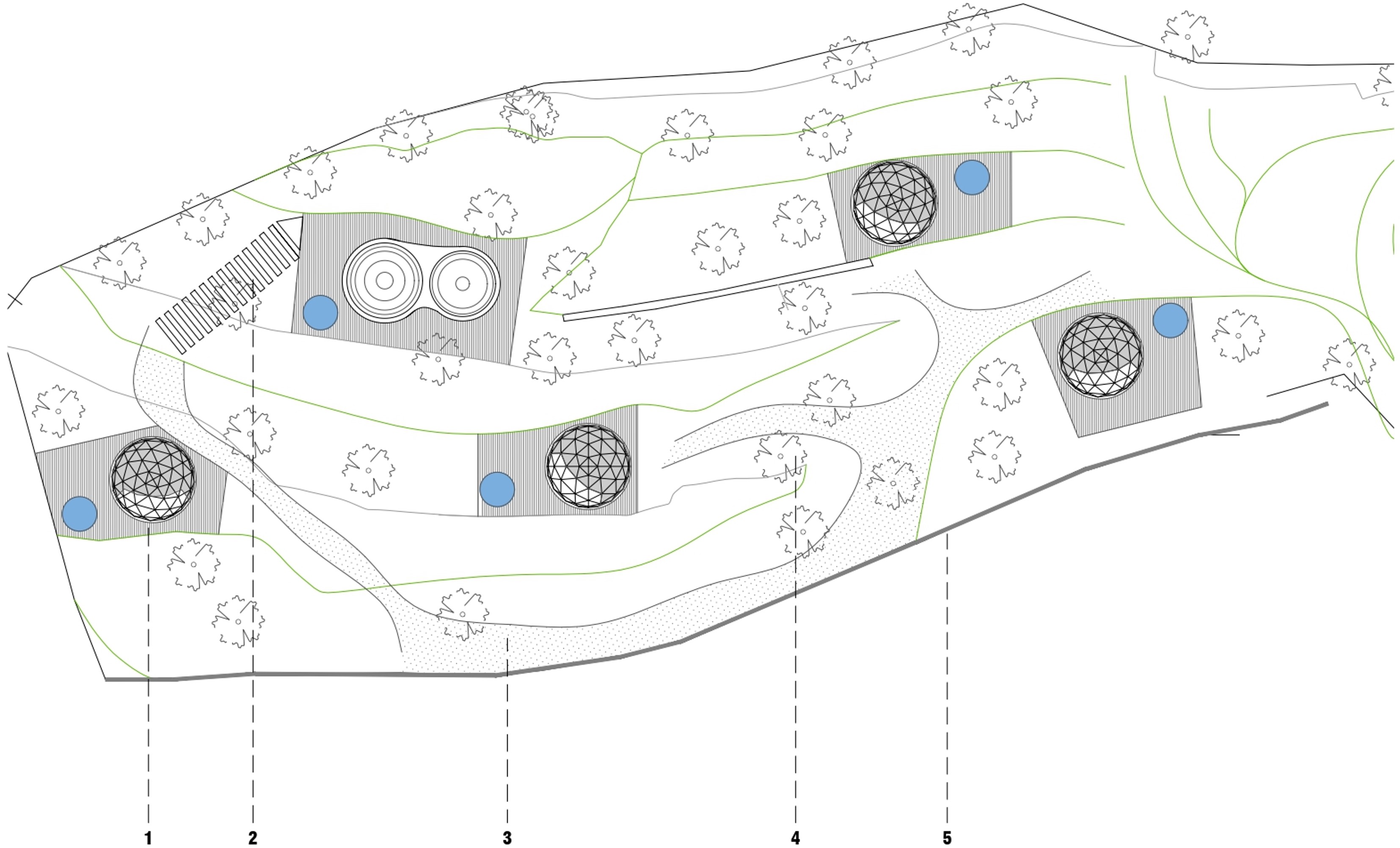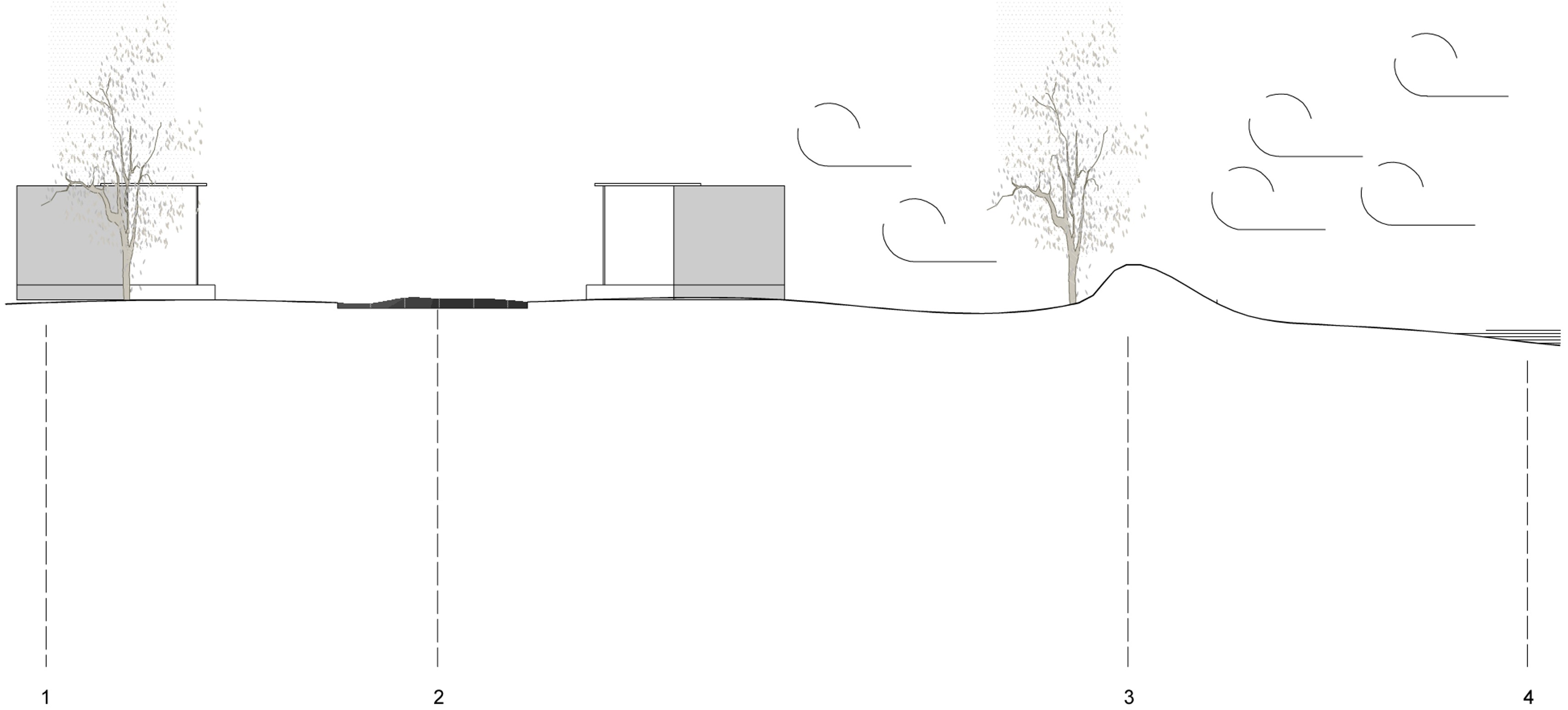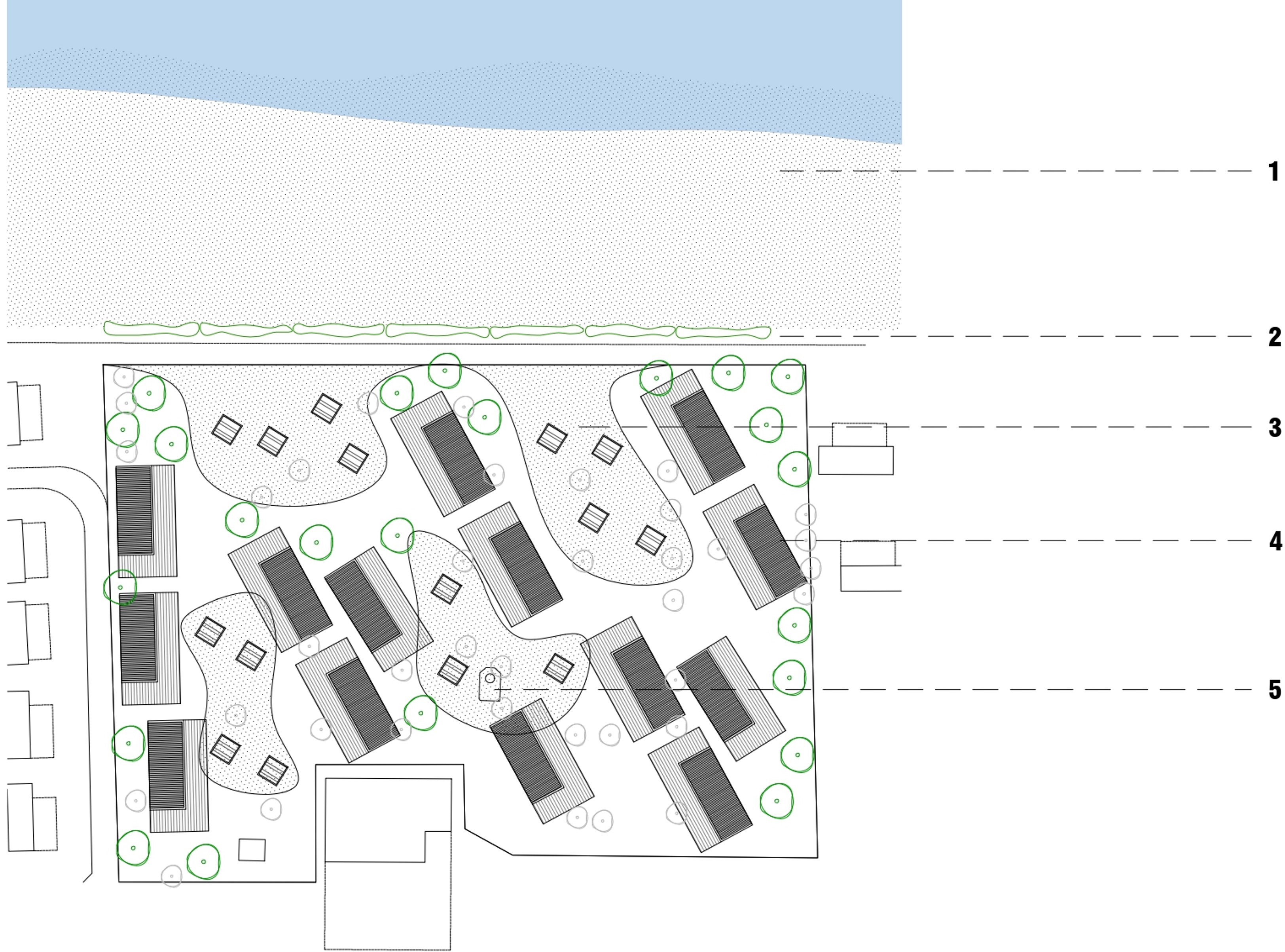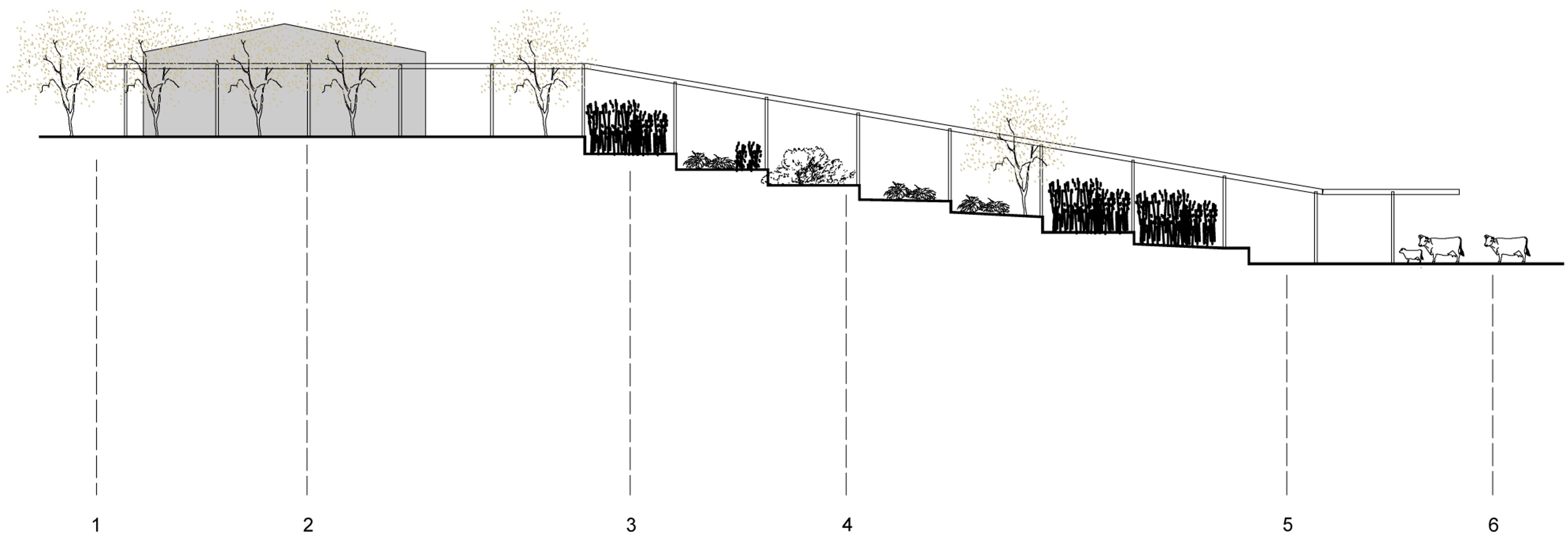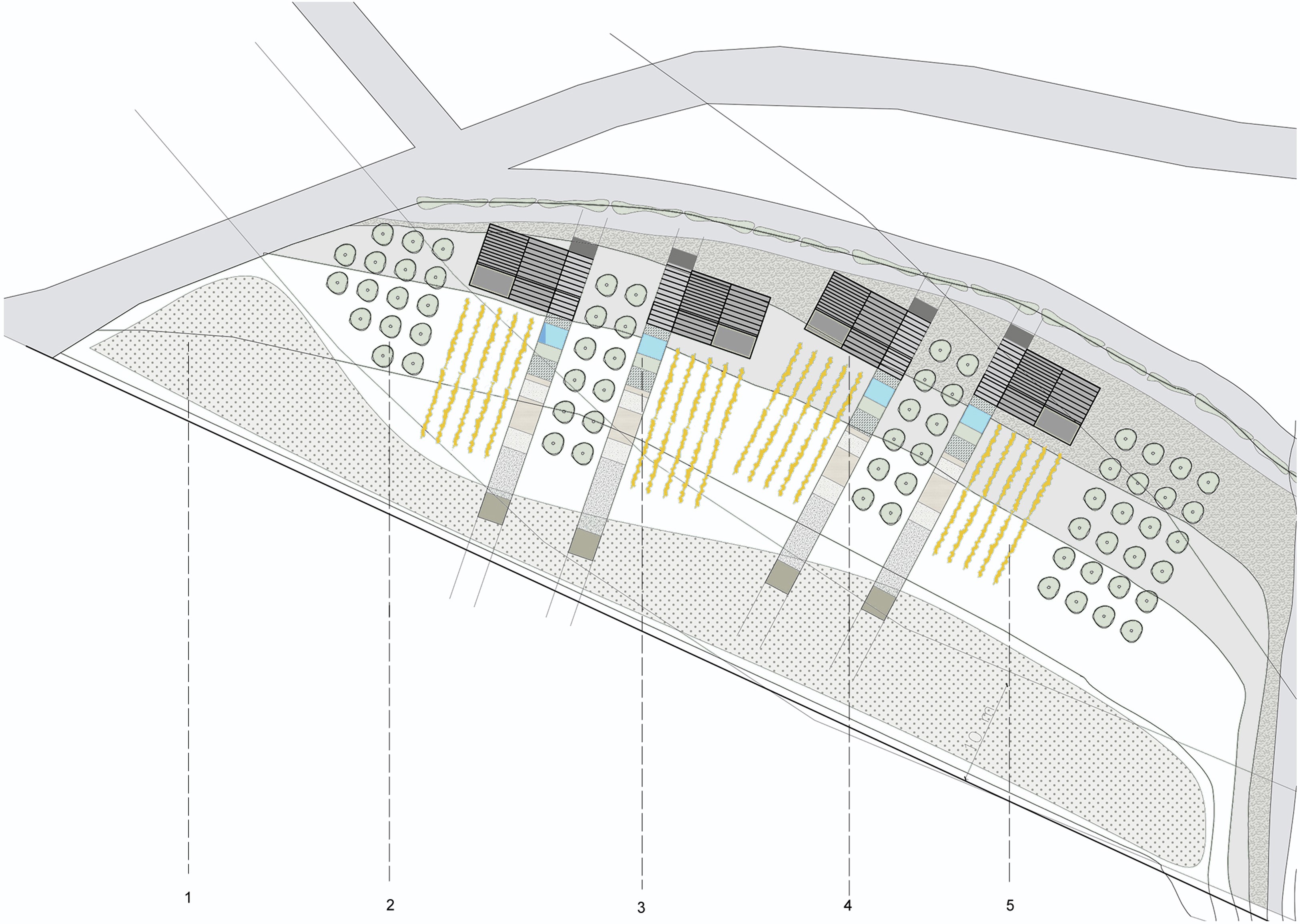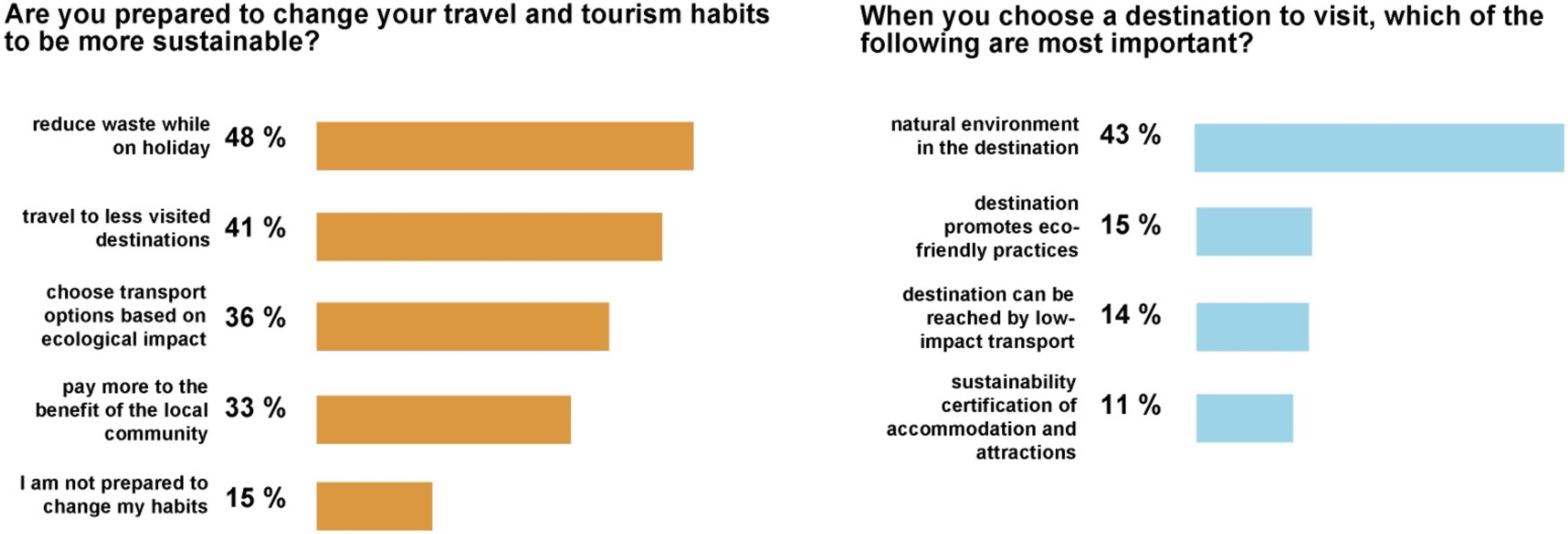The Sustainability of the Campsite as It Relates to Morphology, Climate and Landscape
1
Department of Civil Engineer and Architecture, University of Pavia, 27100 Pavia, Italy
2
Department of Architecture and Urban Planning, Opole University of Technology, 45002 Opole, Poland
†
These authors contributed equally to this work.
*
For correspondence.
Received: 31 May 2023 Accepted: 17 September 2023 Published: 22 September 2023
This article is part of the Special Issue Sustainable Tourism.
Abstract
Recent data on the increase in the number of tourists in the outdoor tourism sector led to the need for greater attention to this phenomenon relating to environmental impact. Campsites and administrations deal with the sustainability issue regarding land use, climate and landscape, adopting sustainability protocols and applying a sustainable tourism approach. Among the main challenges is the need to deal with the local landscape. Campsites must define settlement systems that find site-specific solutions in compliance with the morphology, climate, and vegetation as environmental impact mitigation strategies. This study examines three case studies of campsites rethinking for environmental protection, starting from the settlement system of the maxi-caravans cluster. La Rocca Camping Village (lake) fits into the landscape following its morphology; Spiaggia e Mare Holiday Park (sea) contrasts the climatic element using a directed settlement; Agriturismo Fattoria la Palagina (hills) replicates the existing landscape by generating an integrated one. The case studies follow fundamental parameters for a landscape approach of campsite design: morphology, land use, biodiversity, sustainability and heritage. The paper aim is to demonstrate the sustainability of outdoor tourism, with respect to the landscape. The research results offer strategies for planning and regeneration of campsites to respond to sustainability issues.
Graphical Abstract
Figures in this Article
Keywords
Copyright © 2023
Berizzi et al. This article is distributed under the terms of the Creative Commons Attribution License (CC BY 4.0), which permits unrestricted use and distribution provided that the original work is properly cited.
Cite this Article
Berizzi, C., Capotorto, M., Terlicher, G., & Trabattoni, L. (2023). The Sustainability of the Campsite as It Relates to Morphology, Climate and Landscape. Highlights of Sustainability, 2(4), 185–206. https://doi.org/10.54175/hsustain2040014
References
1.
Lucivero, M. (2015). Il paesaggio del camping nella storia: dall’impatto zero alla colonizzazione intensive (in Spanish). QRU: Quaderns de Recerca en Urbanisme, 5/6, 204–213.
2.
Bell, S., Tyrväinen, L., Sievänen, T., Pröbstl, U., & Simpson, M. (2007). Outdoor Recreation and Nature Tourism: A European Perspective. Living Reviews in Landscape Research, 1, 2. https://doi.org/10.12942/lrlr-2007-2
3.
Vourdoubas, J. (2019). Carbon Neutral Campsites Due to Operational Energy Use in the Mediterranean Region: Are they Feasible? American Scientific Research Journal for Engineering, Technology, and Sciences, 60(1), 202–211.
4.
Trillo, C. (2003). Territori del turismo. Tra utopia e atopia (in Italian). Alinea.
5.
Gossling, S., Peeters, P., Ceron, J.-P., Dubois, G., Patterson, T., & Rishardson, R. B. (2005). The eco-efficiency of tourism. Ecological Economics, 54(4), 417–434. https://doi.org/10.1016/j.ecolecon.2004.10.006
6.
La Repubblica. (2023). Italia. Turismo outdoor da record: 56,6 milioni di presenze tra campeggi e villaggi nel 2023. Stranieri oltre il 50 per cento (in Italian). https://www.repubblica.it/viaggi/2023/04/13/news/italia_turismo_outdoor_2023_cifre-395956427 (accessed 29 May 2023).
7.
TG La7. (2021). Il turismo vale per l’Italia il 13% del pil (in Italian). https://tg.la7.it/economia/il-turismo-vale-per-litalia-il-13-del-pil-30-07-2021-163184 (accessed 21 September 2023).
8.
Ente bilaterale nazionale del turismo e FAITA Federcamping. (2023). Verso un osservatorio sul turismo all’aria aperta. Dalla revisione delle statistiche alle indagini sulle imprese (in Italian). CISET, Università Cà Foscari.
9.
Ispra. (2009). Turismo, capitolo 4 (in Italian). https://www.isprambiente.gov.it/files/pubblicazioni/rapporti/annuario-2009/4-turismo.pdf/view (accessed 21 September 2023).
10.
Istat. (2021). Turismo, capitolo 19 (in Italian). https://www.istat.it/storage/ASI/2022/capitoli/C19.pdf (accessed 21 September 2023).
11.
Winter, P. L., Selin, S., Cerveny, L., & Bricker, K. (2020). Outdoor Recreation, Nature-Based Tourism, and Sustainability. Sustainability, 12(1), 81. https://doi.org/10.3390/su12010081
12.
Di Carlo, I. (2016). The aesthetics of sustainability. Systemic thinking and self-organization in the evolution of cities. LISt Lab.
13.
Cavallino Treporti Municipality. (2021). Dichiarazione ambientale Emas (in Italian). https://www.comune.cavallinotreporti.ve.it/flex/cm/pages/ServeBLOB.php/L/IT/IDPagina/575 (accessed 29 May 2023).
14.
Regione del Veneto. (2014). Progetto IPA Adriatico SHAPE - Pianificazione Spaziale Marittima e Gestione Integrata delle Zone Costiere (in Italian) http://sistemavenezia.regione.veneto.it/content/materiale-scaricabile-del-convegno-progetto-ipa-adriatico-shape-pianificazione-spaziale (accessed 21 September 2023)
15.
UNWTO. (1988) Sustainable Development of Tourism. http://sdt.unwto.org (accessed 29 May 2023).
16.
Wallace, G., & Russell, A. (2004). Eco-cultural tourism as a means for the sustainable development of culturally marginal and environmentally sensitive regions. Tourist Studies, 4(3), 235–254. https://doi.org/10.1177/1468797604057326
17.
Urry, J. (2002). The Tourist Gaze. Sage.
18.
Berizzi, C., & Trabattoni, L. (2019). Mobile Home per il turismo all’aria aperta. Storia evolutive (in Italian). Vicolo del Pavone.
19.
Lucivero, M. (25–27 January 2012). Camping and Open-Air Tourism: An Opportunity for Sustainable Tourism in Coastal Areas. The 6th Conference of the International Forum on Urbanism (IFoU): TOURBANISM, Barcelona, Spain.
20.
Istat. (2023) Esercizi ricettivi (in Italian). http://dati.istat.it/ (accessed 21 September 2023).
21.
De Matteis, F. (2010). Atopia, Teknoring. Il portale delle professioni tecniche (in Italian). Wolters Kluwer. https://www.teknoring.com/wikitecnica/progettazione-architettonica/atopia/#:~:text=Dal%20greco%20a%20%2Dtopos%2C%20privo,con%20i%20luoghi%20dove%20sorgono (accessed 25 May 2023).
22.
Tost, X. M. (2016). Turismo, paisaje y arquitectura. El camping como proceso de regeneracion en Salou (in Spanish). Jornadas de Investigacion Emergenteen Conservacio y Restauracion de Patrimonio.
23.
Tost, X. M., & Martinez Duran, A. (2020). Arquitectura del turismo informal. El habitar ludico en la naturaleza (in Spanish). Ediciones Asimetricas.
24.
Esenarro, D., Cabello, F., Amaya, P., & Vargas, C. (2020). Camping area and dock with viewpoint to promote sustainable ecotourist in the Ticcllacocha Lagoon, Tanta-Peru. International Journal of Environmental Science and Development, 11(5), 268–272. https://doi.org/10.18178/ijesd.2020.11.5.1261
25.
Berizzi, C., Capotorto, M., Terlicher, G. N., & Trabattoni, L. (2022). Coastal Vulnerability: Sustainable Settlements for Outdoor Tourism. In E. Giorgi, T. Cattaneo, A. M. Flores Herrera, & V. d. S. Aceves Tarango (Eds.), Design for Vulnerable Communities. The Urban Book Series (pp. 283–304). Springer, Cham. https://doi.org/10.1007/978-3-030-96866-3_15
26.
Saló, A., Teixidor, A., Fluvià, M., & Garriga, A. (2020). The effect of different characteristics on campsite pricing: Seasonality, dimension and location effects in a mature destination. Journal of Outdoor Recreation and Tourism, 29, 100263. https://doi.org/10.1016/j.jort.2019.100263
27.
Cvelic-Bonifacic, J., Milohnić, I., & Vrtodušić Hrgović, A.-M. (2019). Differences in perceived campsite and destination quality: managers vs. guests. In 8th International Scientific Symposium. Economy of Eastern Croatia – Vision and gowth (pp. 681–691). Josip Juraj Strossmayer University.
28.
Milohnic, I., Vrtodusic Hrgovic, A.-M., & Cvelic-Bonifacic, J. (4–5 October 2017). Quality as a competitive advantage of campsites. The17th International Scientific Conference Globalization and its Soco-Economic Consequences, Rajecke Teplice, Słowacja.
29.
Aas, Ø., Valan, S. K., Evju, M., & Vistad, O. I. (2022). Significant increase in negative impacts on vegetation and soils at informal campsites in a Norwegian national park in the period 1988–2020, Norsk Geografisk Tidsskrift. Norwegian Journal of Geography, 76(2), 125–131. https://doi.org/10.1080/00291951.2022.2061372
30.
Netti, E. (2023). Garda, la vacanza open air vale 1 miliardo (in Italian). Il sole 24 ore. https://www.ilsole24ore.com/art/garda-vacanza-open-air-vale-1-miliardo-AEr4VrnC (accessed 25 May 2023).
31.
Ufficio legislativo del MIBACT. (2004). Decreto Legislativo 22 gennaio 2004, n. 42: Codice dei beni Culturali e del Paesaggio. Art136/142 (in Italian). https://www.bosettiegatti.eu/info/norme/statali/2004_0042.htm (accessed 30 May 2023).
32.
Krautheim, M., & Pasel, R. (2014). City and Wind: Climate as an Architectural instrument. DOM publishers.
33.
Cangelli, E. (2006). Ecocamp, il campeggio ecologico e la riqualificazione ambientale della costa (in Italian). Alinea
34.
Regione Toscana. (2020). La Toscana e i suoi patrimoni Unesco (in Italian). https://www.regione.toscana.it/la-toscana-e-i-suoi-patrimoni-unesco (accessed 30 May 2023).
35.
Bologna, G. (2010). Biodiversità e scienza della sostenibilità (in Italian). L’Italia Forestale e Montana / Italian Journal of Forest and Mountain Environments, 65, 359–362.
36.
AUDe research. (2023). Open air accommodation structures. https://aude.unipv.it/ricerca/mobile-homes-per-il-turismo-sostenibile/ricerca-turismo-sostenibile-mobile-homes-per-il-turismo-sostenibile-strutture-ricettive-allaria-aperta (accessed 5 September 2023).
37.
Berizzi, C., & Trabattoni, L. (2020). Safe holiday camp. https://federcamping.it/manuali-pubblicazioni (accessed 5 September 2023).
38.
Bezzini, D., Schiavetti, I., Manacorda, T., Franzone, G., & Battaglia, M. A. (2021). First Wave of COVID-19 Pandemic in Italy: Data and Evidence. In A. A. A. Asea & P. Kaur (Eds.), Coronavirus Therapeutics – Volume II. Advances in Experimental Medicine and Biology (Vol. 1353, pp. 91–113). Springer, Cham. https://doi.org/10.1007/978-3-030-85113-2_6
39.
De Natale, G., De Natale, L., Troise, C., Marchitelli, V., Coviello, A., Holmberg, K. G., et al. (2020). The Evolution of Covid-19 in Italy after the Spring of 2020: An Unpredicted Summer Respite Followed by a Second Wave. International Journal of Environmental Research and Public Health, 17(23), 8708. https://doi.org/10.3390/ijerph17238708
Metrics
Loading...
Journal Menu
Journal Contact
Highlights of Sustainability
Editorial Office
Highlights of Science
Avenida Madrid, 189-195, 3-3
08014 Barcelona, Spain
08014 Barcelona, Spain
Cathy Wang
Managing Editor
